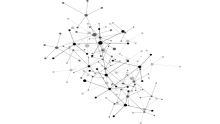The past, present and future of HiPo development programs
HiPo Week Read similar articles

The HiPo week started with the extremely informative webcast session, wherein our founder and Editor-in-chief Ester Martinez quizzed Prashant Pandey, Country Manager at Right Management, and Srikant Balachandra, who is the HR Officer at Airtel, about the effectiveness of the HiPo development programs and how different or similar globally.
There were some key trends which were identified throughout the sessions, and we are going to highlight a few them here for you.
Changes in HiPo Development programs over the past few years
Shift in the attitude and interest of the senior leadership
A few years from now, the senior business leadership in many organizations would set the objectives and their expectations from the HiPo program but they weren’t involved in the design and the executions of the programs. But in the last few years, there has been a shift in the attitude and the interest of the business leadership, and today they are much more inclined towards participating in both designing and executing the HiPo program.
More ROI focused
Prashant Pandey explained how HiPo programs have become more ROI focused. Organizations, and especially the senior leadership, has now started to view HiPo development programs from an investment perspective. A few years back, organizations would try and cover as many people possible as part of either their learning and development programs or as part of their broader talent management programs. Considering, the HiPo programs are largely focused on specific individuals, the percentage spend on HiPo programs as part of the total budget for talent management has gone up.
From leadership skills to entrepreneurial drive
Traditionally, there were always some very basic and fundamental competencies that senior leadership would look for when pondering over the succession of important roles. And this laid down the foundation of what now we see as internal assessments which have been specifically designed, and now being used by many organizations. Now, the trend is against shifting towards who Srikant Balachandran, ‘the champions’.
He further goes on to elaborate, “And by champions, I mean people are able to succeed in times of ambiguity and uncertainty.”
He made another observation today about how the senior leadership today is required to be extremely curious and which is why the desired characteristics in HiPos are showing high levels of curiosity and the ability to demonstrate performance during ambiguity and uncertainty.
HiPo programs across geographies
Differences across Africa, India, and United States
Continuing with the same line of thought of the desired qualities on HiPos being that of demonstrating performance during ambiguity and uncertainty, Srikant spoke about how important it is for India, and hence the focus here is on people with entrepreneurial skill and people with risk taking abilities. He further added this also true for countries like China, but for countries in Africa, it is the ability to lead and mentor people because of the scarcity of talent in the continent. While, for a place like Silicon Valley, where the focus for many organizations is on being the centers of innovation, and hence the focus in on technical skills.
Building perspectives for the high potential
Prashant Panday added to this and said, “I have been involved in HiPo programs in Europe, Middle East, SE Asia and of course India. When I do a comparative analysis, I find the Indian talent management professionals, CHROS are slightly more experimental.” He further elaborated that how the two main areas of focus globally are learning and development, and providing coaching and mentoring support to HiPos. But in India, organizations are going much more beyond this. Today, the focus is on exposing HiPos to the best practices in other industries from which they can learn from and adopt.
Change in attitude of the participants
According to Srikant, HiPos are today looking for global recognition both within the organization and outside the organization. And most importantly, HiPos today are proactively looking for exposure and cross functional roles. And most importantly, HiPos who are going to lead the digital agenda would be leaders in the future.
Also, HiPos today, as Prashant pointed out are very forthright about their future career. Earlier the participants of the programs had to be pushed, but now they are much more serious about development intervention.
And as Srikant said, “When we talk of HiPo we do look through the company lens. If you just concentrate too much on one one pair of lens then you maybe really not making your organization future ready. And to that extent, we need to calibrate what percentage of the critical growth in the future, you would actually go and get path-breaking talent from outside to inject new capabilities in your company.”
Going forward
As already explained how the HiPo programs today are more ROI focused than before, Prashant spoke about how it is further going to be more true for the future, “ HiPo are drivers of the business going forward than they should be able to think strategy, they are ones going to drive execution in my organization. They would require focus from a development point of view.”
Clearly, HiPos and HiPos development programs are becoming more and more important for the organizations in India and all over the world.





